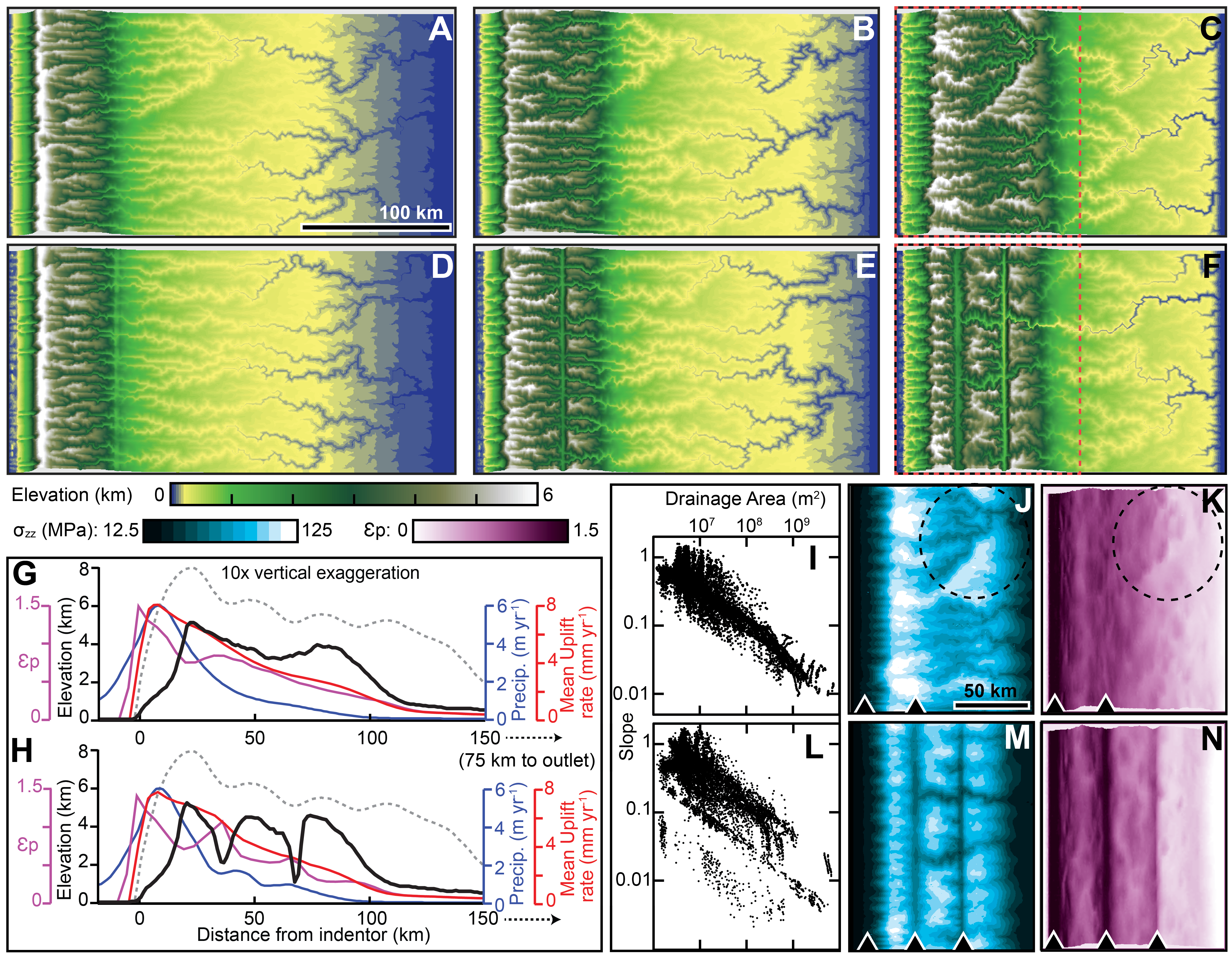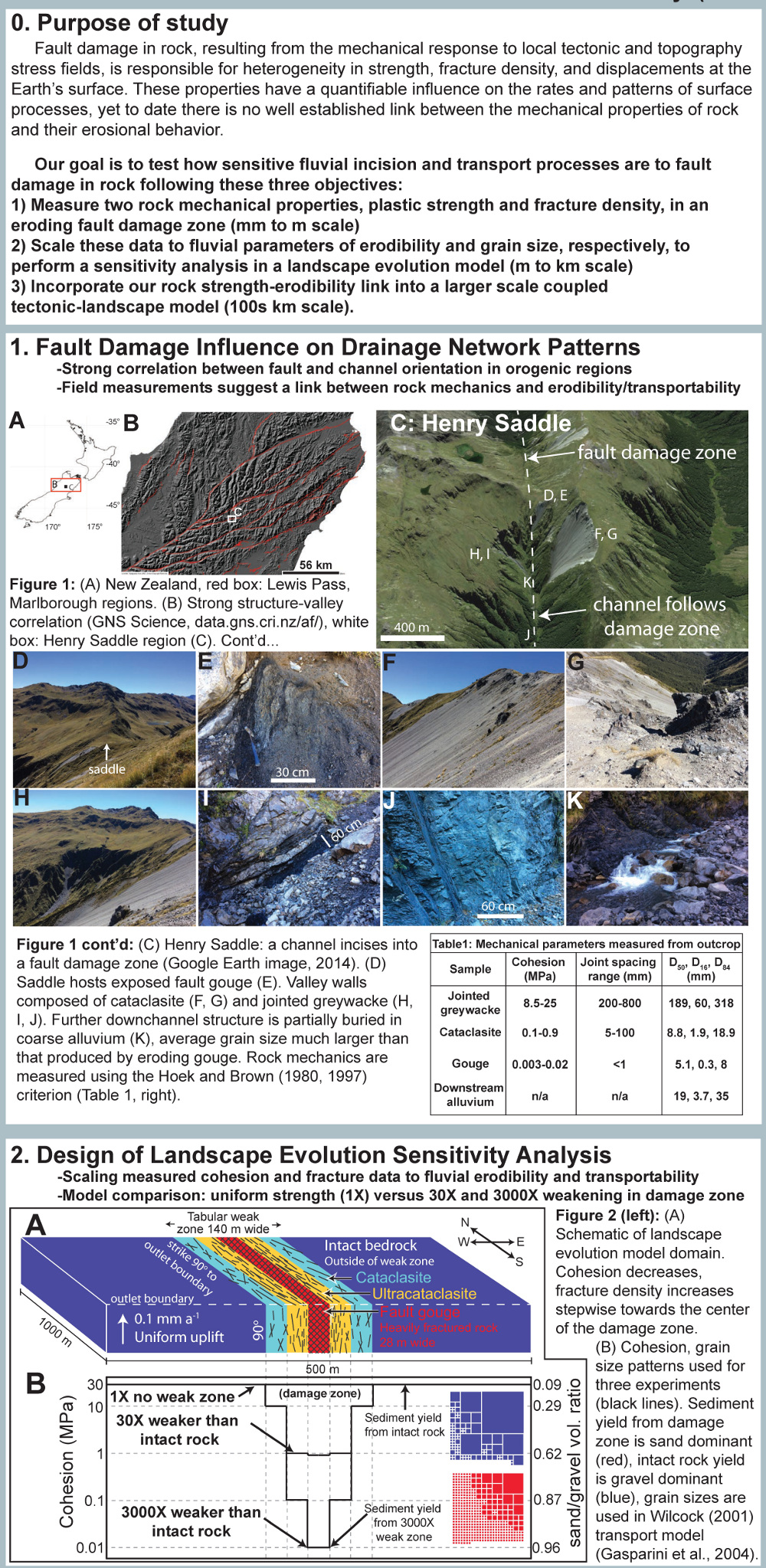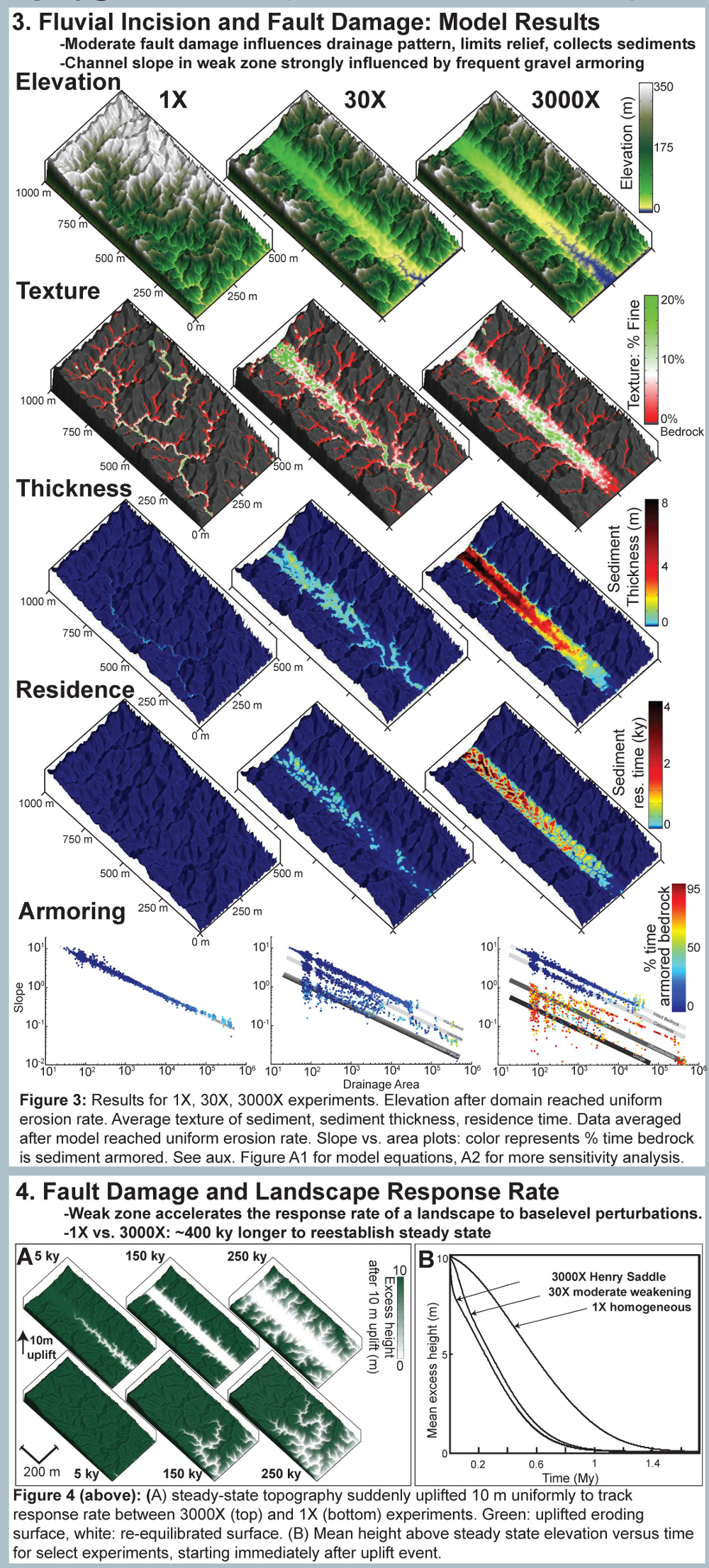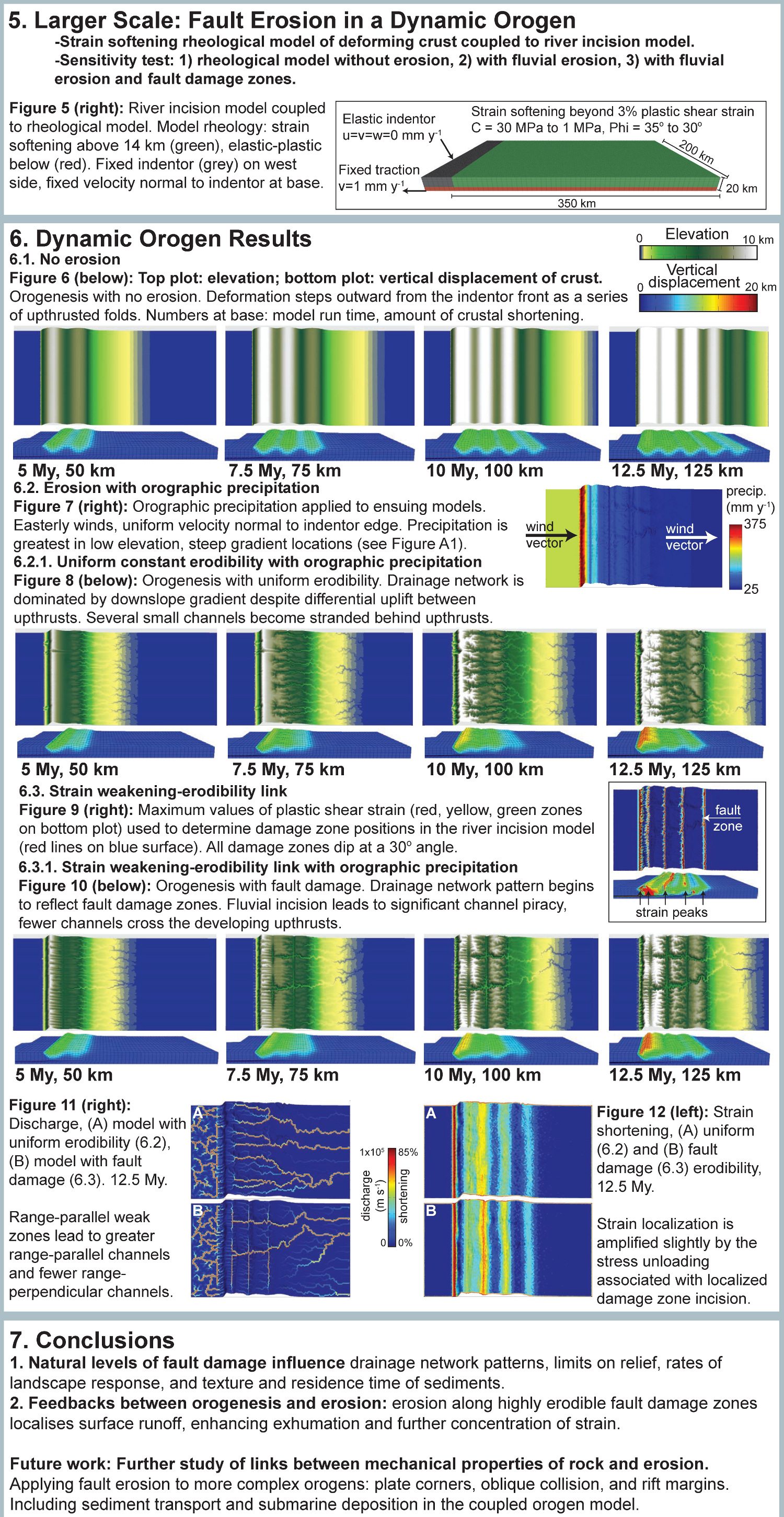The combined influence of rock damage and surface displacement in landscape evolution
Dynamic links between rock damage, erosion, and strain during orogenesis
Roy, S.G.1; Koons, P.O.1; Upton, P.1,2; Tucker, G.E.3
1. Earth and Climate Sciences, University of Maine
2. GNS Science
3. Cooperative Institute for Research in Environmental Sciences (CIRES) and Department of Geological Sciences, University of Colorado

The mechanical properties of the lithosphere are increasingly recognized as having a quantifiable influence on the rates and patterns of surface processes. Strain localization, controlled by the mechanical response to local tectonic and topographic stress fields, manifests as tabular fault damage zones that impose displacement, strength, and grain size distribution patterns on the Earth’s surface. Brittle failure and comminution associated with seismogenic cataclasis can reduce bedrock cohesion by several orders of magnitude and generate dense fracture networks, such that the grains released by rock weathering are much finer than those produced by weathering of the surrounding undamaged, intact bedrock. We combine models of landscape evolution and crustal mechanics to investigate how strain-induced crustal failure can exert significant controls on the rates and patterns of landscape development and adjustment. Based on our model results, drainage network patterns tend to reflect the geometry of underlying active or inactive tectonic structures due to the rapid erosion and transport of fault gouge. Fault erosion can be over an order of magnitude faster than erosion of intact bedrock. Fault zones with shallow dip angle are capable of enforcing lateral migration of their structurally confined rivers. Deep valleys created by eroding faults quickly become armored by coarse sediments transported from nearby intact bedrock. Differential displacement affects drainage network patterns by deforming and uplifting the surface relative to baselevel while simultaneously exposing fresh fault damage zones. Topography produced from these processes reflects the strong mechanical anisotropy associated with strain localization and brittle failure over many length scales, contrasting with the absence of a strong directional dependence from dendritic rivers incising into a predominantly homogeneous substrate.
Video 1
Video 2
Video 3
Video 4
Video 5
Video 6
Video 7
Video 8
Video 9
Video 10
Video 11
Video 12


